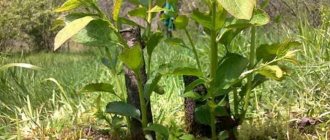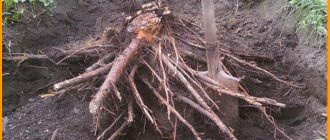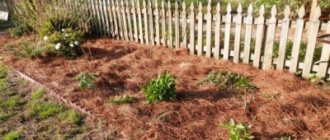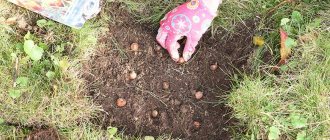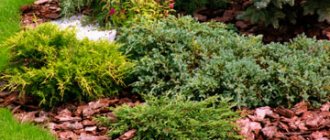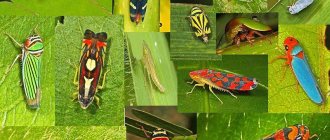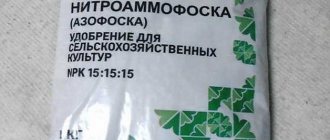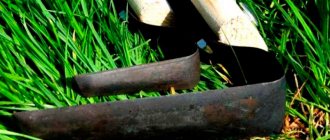Common varieties
Most often, common cherry varieties are planted on personal plots. The most famous of them:
- Seedling No. 1. A productive variety, resistant to fungal diseases. The cherry tree is medium in size. The crown is round in shape. Sweet and sour fruits are red, small in size, juicy with yellowish flesh. It begins to bear fruit at 3-4 years.
- Novodvorskaya. The cherry tree of this variety has a ball-shaped crown. The fruits are sour-sweet. The dark red flesh is juicy and fleshy. The bone is small in size and can be easily separated. In the middle zone, the variety ripens in mid-July.
- Wreath. The variety was obtained on the basis of Novodvorskaya cherry. Large cherry tree. The crown is noticeably narrowed in the upper part. Dark red berries are round in shape and medium in size. The taste of the berries is sweet and sour. The pulp is very juicy, dark red when cracked. Tolerates frosty winters well.
In addition to the varieties familiar to gardeners, there are non-standard types of cherries:
- The most famous of them is felt cherry. This is a very interesting species, which differs from ordinary cherries in that it grows in the form of a bush. The leaves of the felt cherry are corrugated, the fruits are attached to the branches with short stems. This garden plant got its name from its felt-like pubescence. Light fluff covers the underside of the leaves, stalks and fruits.
- Sakura. A very distant relative of the common cherry. Sakura fruits are dark, there is almost no pulp, and they look like bird cherry berries. By crossing Sakura and European cherry trees, varieties suitable for consumption were obtained (Satonishiki, Nanye).
Reasons for the appearance of growth and methods for its removal
Some types of garden trees and shrubs form shoots. Plum, lilac and cherry trees usually have thickets of shoots around the main parent plant.
What are they and how to deal with cherry and plum growths?
Shoots begin to stretch upward from the lateral roots of the trees. If you do not remove plum and cherry sprouts, a tree with its own crown and root system will appear in their place. During the first years of its existence, the offspring lives at the expense of the mother tree, depriving it of vital juices. Over time, the new cherry, existing at the expense of the parent, can completely weaken it. In addition, overgrowth can clog lawns and beds to such an extent that they become completely unsuitable for growing cultivated plants.
Reasons for the appearance of root shoots
The appearance of root shoots signals problems with the old fruit tree. This suggests that the mother tree is seeking to replace itself with new ones. There may be several reasons:
- The root system of the cherry tree is exposed. The problem can be solved by covering the protruding roots with a layer of soil.
- In the spring, the crown was formed incorrectly, as a result of which the natural metabolism was disrupted. Due to the fact that too many branches were sawed off, the number of blossomed leaves is not able to provide the root system with the required amount of products they produce.
The crown was formed incorrectly
When the cause of the growth has been established, you need to try to eliminate it. If it is not possible to treat the cherry tree, it will have to be cut down and the remaining stump uprooted. Instead of the old cherry, one shoot is left. A new graft of a suitable variety is made on it.
Which sprout is suitable for grafting? The strongest shoot is left, the rest must be uprooted. If this is not done, they will not allow the new tree to develop normally.
Is it possible to prevent the appearance of cherry blossoms?
A novice gardener may have a natural question: is it necessary to look for ways to destroy cherry trees? Isn't it easier to leave it alone - let new cherry trees grow that will bear even more fruit!
Caring for overgrown cherry trees is much more difficult
The main harm is that the cherry shoots take nutrients from the soil for their growth, which is why the yield on the main tree is significantly reduced, or even completely lost. You should not place high hopes on the rapid fruiting of new cherry bushes, since grafted cherries produce wild shoots that do not bear fruit. In addition, caring for overgrown cherry trees is much more difficult.
Video about how to rid an old tree of root shoots
First of all, be careful when choosing seedlings: having planted tree- or bush-type cherries on your plot, you will not subsequently rack your brains about how to deal with cherry growth. Another thing is planting coppice cherries, which after fifteen years, due to their nature, begin to form shoots, especially for self-rooted plants.
When purchasing coppice-type cherries, keep in mind:
- self-rooted seedlings (Apukhtinskaya, Vladimirskaya, Krasnopakharskaya, Shubinka) although they form a lot of shoots, their offspring retain all the properties of the variety and are quite suitable for replacing old cherries;
- varietal cherries (Rastorguevskaya, Malinovka, Molodezhnaya, Pamyat Enikeeva) on clonal rootstocks can, to a greater or lesser extent, form shoots of wild rootstock, which will need to be regularly removed;
- varietal cherries on seed rootstocks (from Shubinka and Vladimir cherry seedlings) do not produce root shoots.
Be careful when choosing seedlings: having planted tree- or bush-type cherries on your plot, you will not subsequently rack your brains about how to deal with cherry growth
Be sure to check with the seller whether the cherry seedlings are rooted or grafted? And, if you don’t want to think about the problem of how to get rid of cherry growths in a few years, give preference to seedlings on seed rootstocks.
But what to do with old cherries that have just begun to sprout? It has been noted that the number of shoots in the same plant can increase with shallow watering, with branches freezing, cherry trees being affected by diseases, and also as a result of mechanical damage to the root system and crown of the tree. To reduce the formation of cherry blossoms, do not forget about sanitary pruning of damaged branches and prevent the spread of pests and diseases. Instead of loosening the soil under the cherry tree, use mulching. It is better to water the plant rarely, but abundantly.
One of the reasons may be simple heat, from which the soil under the tree cracks, and as a result of damage to the roots, young shoots begin to grow from them. In this case, covering the ground under the cherry tree with hay or straw will help.
How to get rid of unwanted cherry growth
To avoid headaches about removing cherry shoots, you need to plant in your garden those varieties that do not form extra shoots. If, after all, garden trees have produced “babies” around them, you cannot leave them all on the site. There are several ways to solve this problem.
For your information! None of the known methods allows you to completely remove cherry blossoms at one time. Over time, the root system of the old tree will give rise to new shoots.
The most reliable way to remove cherry bushes is considered to be their mechanical destruction using garden tools. This must be done sequentially:
- New shoots are removed as soon as they appear, preventing them from growing.
- All summer long the shoots are pruned with pruning shears, and in the fall and early spring the shoots are dug out along with the roots to the roots of the old cherry tree. At this point they are cut with an ax and smeared with garden varnish.
- The stumps remaining after cutting the shoots and the dug up roots can additionally be doused with boiling water.
- The dug up roots are covered with earth.
You will have to constantly uproot the roots and cut off the shoots with pruning shears. For city dwellers who rarely visit their dachas, this method of eliminating wild thickets is completely unsuitable. During their absence, a whole forest of new cherry shoots manages to grow on the site.
Traditional methods of dealing with unwanted tree-like crops suggest getting rid of them using buried fences. To do this, you need to dig slate into the ground around the trunk within a radius of 1 m. The fence needs to be buried to a depth of 0.5-0.7 m. In this regard, the tree will be forced to direct its roots not to the sides, but deeper. After this, you can try to cover the soil inside the slate fence with a thick layer of mulch. Suitable for this purpose:
The benefit is that the shoots will grow less, and the cherry will receive additional nutrition from the rotting layer of mulch.
Why can’t you dig up young cherry shoots or how to get rid of them once and for all?
It is difficult to imagine any orchard without cherries. Not only is this berry tree incredibly beautiful, but it also produces healthy and tasty berries. The convenience of cherries is that they do not require any complex care, but at the same time give a fairly rich harvest.
But cherries have one small drawback. Every year, lush growth is formed around the tree, consisting of many small root shoots. And the older the tree, the more similar shoots it produces. And if this question torments you, then find out how to get rid of them once and for all.
Drastic ways to destroy vegetation in a garden plot
How to remove annoying cherries from the garden forever? If the purchased garden plot is completely overgrown with cherry bushes, the only way to free the land from it is by deep digging using a tractor and plow. In this case, all trees growing on the site are uprooted along with cherry thickets. After plowing, you need to remove all plant residues:
Particular care must be taken to remove the remains of the horses, so they are pulled out of the ground as much as possible. Uprooting and plowing will help remove not only old tree trunks with roots, but also weeds from the garden.
Destroying vegetation by filling the ground with salt is only possible if future construction is planned on this site. Nothing will grow on salty soils.
The best way to combat overgrowth is to uproot the mother tree, and with it all its offspring. Instead, varieties are planted that are not capable of producing root shoots.
How can you uproot a cherry tree on your property if you can’t hire a tractor? The problem can be solved quite simply; the old tree needs to be cut down. And to speed up the destruction of the stump, use herbicides. To do this, a niche is drilled in the hemp, into which any of the products are poured (tornado, hurricane forte, weeding, etc.). After this, the hole is covered with polyethylene. After a few days, the procedure is repeated. Ammonium nitrate can be used instead of herbicides. Along with the stump, all the thickets formed from the parent tree will die.
You can tame the growth of unwanted tree-like vegetation using a special product - an arboricide. This group of drugs destroys cherry, lilac and plum bushes without uprooting, without touching their parent. After applying this chemical, the soil in the garden continues to bear fruit normally.
Important! If the gardener does not intend to destroy the fruit tree responsible for the appearance of sprouts on the site, then the shoots cannot be sprayed with herbicides.
A good neighbor for cherries that kill excess vegetation is a walnut or chestnut, which forms a shadow, and without light, as you know, shoots will not appear. These trees will help manage unwanted vegetation without uprooting.
The experience of experienced gardeners on how to remove cherry shoots
The question of how to remove cherry shoots from your plot remains relevant for many gardeners from year to year. After all, it is impossible to completely get rid of sprouting new shoots - so you have to either tinker with cutting down the shoots every year, or experiment with new ways of removing shoots at your own peril and risk.
It is impossible to completely get rid of sprouting new shoots
The most popular and effective method of destroying cherry shoots, at least for a short time, is considered to be regular control of emerging cherry shoots with an ax and shovel. Moreover, this work must be done correctly:
- shoots are removed immediately as they appear, leaving them no opportunity to gain strength;
- cutting off the above-ground part of the shoot with pruning shears is not enough - stumps with buds will remain in the ground, from which even more powerful offspring will then grow;
- in early spring or late autumn, shoots of the shoots are dug up to the place where they extend from the horizontal root of the cherry tree and chopped off with an ax, leaving no stumps;
- the place of the log house is covered with garden varnish so that nothing else can grow from it;
- the dug holes are again covered with earth.
Herbicides should be used with great caution to destroy shoots, since you can accidentally harm the mother tree
Additionally, it is recommended to remove fallen berries from under the cherries so that wild bushes do not grow from their seeds. You can limit the germination of shoots by using sheets of slate or thick cardboard, burying them half a meter into the ground under the cherry tree. Planting a shady tree nearby (linden, maple, chestnut) also slows down the development of cherry shoots.
Herbicides should be used with great caution to destroy shoots, since you can accidentally harm the mother tree. In addition, it is not always possible to achieve the desired effect - there is a possibility that in the place of one shoot killed by poison, two new ones will grow
Video about how to deal with unwanted growth
A radical method of destroying cherry trees (along with old trees) is deep digging of the area with an excavator or tractor. But this option is not suitable for every site, and it cannot be called cheap.
Unfortunately, a 100% effective way to remove cherry growth once and for all has not yet been invented. Therefore, the choice is yours - to constantly fight with growing shoots or to completely get rid of the old cherry tree along with all the shoots and plant new varieties that do not produce shoots.
Infectious diseases and pests
Cherry trees can suffer from fungal and infectious diseases. The immunity of a tree-like garden plant is undermined by:
- bad weather conditions: daily temperature fluctuations, rainy or very dry summers, too cold snowless winters;
- cracking and shedding of a large area of bark;
- harmful insects;
- harmful bacteria;
- infected trees growing in close proximity.
Pests of cherry shoots
To prevent the threat of diseases of fruit vegetation, it is necessary to carry out timely prevention. The fight against fungi is aimed at removing the localization sites of the pathogen. In this way, the gardener prevents the spread of infection to nearby trees.
The area of the garden where the diseased plant was discovered is treated with biochemical agents, the action of which is aimed at destroying the infection and protecting healthy plants. Before spraying, remove all remaining crop from the branches. Chemicals are sprayed in the evening so as not to cause burns on the foliage.
Calm days are more suitable for preventive treatment. In such weather, it is easier to apply the chemical to disease-affected branches and leaves. When spraying, you need to use respiratory and hand skin protection.
Important! If after treatment with chemicals it rains within 24 hours, spraying must be repeated.
Preventative treatment of trees in the garden is also carried out against harmful insects. If several pests of a certain type were found on the site, purchase a targeted drug.
Gardeners must decide for themselves which method to choose to get rid of cherry bushes growing rapidly in their garden plots. If a person likes to root out sprouts in his garden every six months, he can continue to fight the annoying vegetation with a shovel, an ax and pruners. Uprooting an old cherry tree is much more effective; this method will help get rid of it along with its offspring.
Getting rid of cherry trees on your property forever
Gardeners often wonder how to get rid of cherry trees on their property. This question is really relevant, because cherries growing in the country produce a lot of shoots. This especially applies to old plants. You can learn about the reasons for the appearance of root shoots, their harm and benefits, and methods of elimination from this article.
How to effectively remove root growth from cherries and plums
Hello, dear friends. Cherry is a wonderful and quite unpretentious tree, with an annual harvest. But it, like plums, has one feature: the annual formation of numerous root shoots. The older the tree, the more it is formed and at a greater distance from the mother tree - sometimes tens of meters.
This brings a lot of inconvenience to the garden, and young trees take nutrients from the fruiting cherry and deplete it. Every year, hundreds of thousands of gardeners ask themselves the question: how to get rid of cherry trees on their property with a minimum of effort and expense.
Why does growth appear?
Basal growth of cherry trees is a common occurrence. But before you start fighting shoots and making attempts to get rid of them, you need to understand the reasons for the appearance of shoots.
- Incorrect planting, in which the roots are poorly covered with soil and are almost on the surface, provokes the active formation of shoots.
- Many shoots appear when the scion and rootstock are incompatible or are poorly compatible.
- The growth of shoots is activated by excessive pruning of branches.
- Uncollected fallen fruits can cause new plants to emerge from the seed.
Reason for appearance
In cherry trees, shoots often appear, both near the roots and throughout the area. Before you start fighting it, you need to determine the main reasons for the appearance of shoots.
- Cherry growth can be caused by improper planting. If the roots of the tree are poorly covered and are on the surface, then shoots appear much more often. This is the plant's response and its way to survive.
- Extra shoots appear when the scion and rootstock are incompatible with each other.
- You cannot cut the branches of an adult tree too much; in response, it will produce a large amount of shoots.
- It is recommended to pick all the berries. Falling and falling into the ground, they begin to sprout. By next season, you can see a brush of growth throughout the garden.
- If the tree has been subjected to mechanical damage and wounds have formed on it, this may cause new shoots to appear. Cold and heat can also have detrimental effects on plants.
Following simple rules will simplify the fight against unwanted shoots. If they do appear, then urgent measures must be taken.
What is its harm or benefit?
It is, of course, possible to remove cherry trees from the area. But it is not always necessary to completely remove all young shoots. The main benefit of shoots is the ability to reproduce cherries. But if the cherry is a varietal tree, then its shoots will not be varietal trees; they will have to be grafted.
Thickets of shoots can fill more and more territory every year if they are removed incorrectly or not removed at all. In addition, pests can form their homes in them. But the main harm to the shoots is the competition of young shoots with the mother tree for moisture and nutrients. There is a significant decrease in the yield of the mother tree.
Preventing the appearance of overgrowth on the site
It is unlikely that it will be possible to permanently remove cherry root growth from a plot, but it is quite possible to reduce its amount to a minimum. Here's what experienced gardeners recommend doing for this.
- Do not plant varieties prone to root growth. Select seedlings grafted onto seed rootstocks.
- Avoid carrying out any work with the soil in the root zone of the cherry tree. You should not plant anything directly in the tree trunk circle.
- Do not allow the soil to dry out in the root zone. Water rarely, but abundantly, and then mulch the tree trunk circle.
- Cut off emerging growth immediately, before it becomes woody.
- Avoid mechanical damage to the cherry tree trunk and its roots.
- Pruning, especially radical pruning, should not be done at once, but over several years.
- Limit the spread of horizontal roots by digging sheets of slate or other dense material (metal, plastic) around the cherry tree to a depth of at least 0.5 m.
- The root zone can be covered with a layer of roofing material or other dense material, for example, old linoleum. Nothing will grow under it, including root shoots.
- Remove fallen berries.
- Take measures to prevent the occurrence of diseases and pests.
The better the cherry care, the less root growth there will be.
Strictly speaking, any measures aimed at maintaining the health of cherries will prevent the appearance of root shoots. Timely fertilizing and watering, caring for the tree trunk, treatment against diseases and pests, competent timely pruning and whitewashing of trunks - all this contributes to the good condition of the trees and does not provoke them to grow new root shoots. That is why you need to take care of the health of the cherries and carry out all work to care for the plantings on time and in full.
Varieties that form basal shoots
Cherries create a large number of root shoots:
But the shoots of these cherries are perfect for replacing old wood. The fruits that young trees produce will not differ in any way from the fruits of the mother tree, because these are native root varieties. If a lot of shoots have grown over the season and the shoots have become well strengthened, then they can be dug up in the spring and transplanted to a permanent place. The following varieties of cherries also form many shoots:
But these shoots grow wild. And here is the place for the question: “How to deal with cherry growth of similar varieties?” There are not so many ways to destroy it.
Methods of disposal, advantages and disadvantages
A gardener who has noticed the active growth of shoots is wondering how to get rid of cherry shoots. You can learn from more experienced summer residents how to get rid of cherries in the garden forever. So, there are several ways to remove cherries from the plot:
- Regular cutting down of shoots.
- Herbicide treatment.
- Digging up a site with an excavator.
The last method is very expensive both in terms of finances and execution time. In addition, it is necessary to dig up the soil at least once a year.
Manual removal
The answer to the question of how to get rid of cherry shoots manually is quite simple - you can destroy young shoots by regularly cutting them with pruning shears. You can also get rid of thickets with an axe. What to do to remove young cherry bushes:
- try to cut down the shoots at the earliest stages, before they have time to gain strength and growth;
- felling should be carried out in early spring or late autumn: dig up the root where the shoot emerges from it, and chop off at this place;
- treat the cut area with garden varnish;
- bury the felling site.
You can get rid of roots in the garden by cutting them down. But it is important to carry it out very carefully so as not to damage the roots of the mother tree. The method of simple digging is ineffective. If you remove shoots in this way, then in the next season at least three new ones will appear in the place of one dug up shoot.
Use of chemicals
Gardeners often encounter dense growth of cherry trees grown from an old tree. How to get rid of such shoots is a question that interests many. One of the methods of combating new shoots can be treatment with special chemicals - herbicides. Herbicides effectively kill shoots, but do not guarantee that new shoots will not sprout from the bush next season. How to remove cherry shoots:
It is recommended to use the drugs according to the instructions indicated on the packaging.
Destruction on stumps
The stumps of cut cherry trees can also sprout. To prevent this from happening, it is necessary to carry out special manipulations:
- uproot stumps in a timely manner;
- remove roots without uprooting.
Uprooting is a labor-intensive procedure. Not every gardener will be able to find the time and money to uproot the roots of an old cherry tree. But the removal method without uprooting is convenient and uncomplicated.
To kill the roots, use:
- urea (ammonium nitrate);
- sodium nitrate;
- potassium nitrate;
- rock salt.
To combat roots, they use conventional fertilizers, which almost every gardener or summer resident has. About 15 deep holes are made in a stump with a diameter of 40 cm. Any substance is poured into the holes and filled with water. The top of the stump is tightly covered from precipitation and sunlight and left for 6 months when treated with saltpeter and for 1.5 years when treated with salt.
Stump treatment should be carried out in late summer - early September. After the required period, the stump is set on fire, and it completely burns out along with the roots. Complete burnout is ensured by a chemical reaction during which oxygen is released from the nitrate.
Cherry and plum stumps are dealt with in a similar way.
Treatment
The fight against cherry root shoots is considered to be quite a serious problem for gardeners, so various methods and techniques for combating this phenomenon have been developed in practice. Typically gardeners use one of the following methods:
- mechanical removal;
- installation of a root barrier;
- use of chemicals.
There is no single recipe for combating root growth and each method has its own advantages and disadvantages.
It is necessary to remove the shoots, since they not only clog the area, but also take away most of the nutrients from the mother tree, which greatly reduces the yield.
Mechanical removal
Many gardeners, when cherry shoots appear, use mechanical methods to remove them. This may be cutting down the growth or pruning with pruning shears. Trimming the above-ground part of the root shoots with garden pruners leads to the opposite result. In place of the cut shoot, from the left stump, two or three new and more powerful plants usually grow, so this method cannot be used. Another method is considered relatively reliable. In the spring, before the sap begins to flow, or in late autumn, the root shoots are dug up to the point where they connect with the horizontal root of the parent tree. At this point, the shoot is cut down with an ax without leaving even a small stump. Then this place is treated with garden varnish, after which the holes are buried. This link will tell you about the Auria tomato variety.
It is advisable to remove all root shoots immediately, as they appear, so that they do not have time to gain strength.
Installation of a "fence"
Shoots on cherry trees grow on those roots that are shallow in the soil and spread horizontally. Typically, the depth of such roots does not exceed 40 cm, but there are always exceptions. One of the effective ways to combat growth is to install a “fence”. For this purpose, sheets of durable material are buried into the soil to a depth of 60-70 cm. They form a kind of fence around the trunk of the cherry tree. The radius of such a “fence” should be 1.5-2 meters so as not to damage the root system of the parent tree. For an adult tree, the radius will have to be increased by 2-2.5 times.
Caring for the tree after removal
After destroying the shoots, it is recommended to dig slate into the ground in a circle (1.5 m) around the tree to a depth of about a meter. Such a fence will limit the space for the growth of shoots, from where removing them will not be difficult. However, the effectiveness of this method is assessed as not the highest. When removing overgrowth with an ax, the cuts must be treated with garden varnish.
Experienced gardeners recommend watering trees that produce shoots (plum, sweet cherry, cherry) rarely but abundantly.
Preventive measures
As a preventative measure, it is necessary not only to reduce watering, but also to mulch the soil under the fruit trees. Mulch will prevent shoots from coming to the surface. To prevent the appearance of overgrowth, it is necessary to follow the planting rules. The roots of the seedling should be covered with soil. It is important to prevent cracking of the soil above the roots, since exposure to sunlight will provoke the growth of shoots from the roots.
When carrying out autumn work in the garden, it is necessary to remove fallen fruits and seeds.
Almost every gardener encounters shoots from fruit trees. It is important to learn how to properly care for plants and fight shoots, then the garden will delight you with its harvest for many years.
How to remove cherries - we study methods
When growing cherries on their plots, many gardeners are faced with the need to cut down and uproot trees. Such work presents certain difficulties, since it is necessary not only to cut down the tree, but also to get rid of all the roots, the length of which can reach 3-5 meters.
In this article we will tell you how to get rid of cherries and how to destroy tree roots in your garden. Despite the apparent complexity, every gardener is quite capable of performing such work. You just need to properly plan all the work in the garden, and you can easily uproot problem trees on your site.
Getting rid of root growth
Most fruit trees, and cherries in particular, are capable of forming a large number of root shoots, which impair fruiting and take away life-giving juices from the trees. Therefore, the gardener must necessarily remove root shoots, not allowing small cuttings to develop and weaken the main tree.
Simply cutting off the root shoots is not enough; the cherry root and growth point will remain in the ground, from which a new shoot will appear in just a few weeks. Such shoots can constantly appear from untreated growth points, so root shoots should be removed correctly.
To properly remove cherry root shoots, you need to carefully dig up each such plant directly to the root of the main tree. Next, we carefully cut off the shoots at the root, and treat the growth point on the main root of the cherry with garden varnish. The latter is necessary to prevent the re-formation of root shoots from the roots of the tree. Remember that the sooner you start removing root shoots, the easier it is to get rid of it and the less weakened the cherry will be in the area, and, consequently, you can get an excellent harvest.
How to replant a cherry tree
In order for the plant to take root well, you first need to choose a suitable site. A well-lit and elevated place is most suitable for this. Cherry does not like damp lowlands, as such conditions can lead to rotting of the roots and its death.
All varieties require soil with neutral acidity. Acidic lands are limed with slaked lime, ground chalk or dolomite flour. The drug is spread evenly, then shallowly embedded in the soil. It is better to carry out the procedure in the autumn, after digging the ground.
Trees are usually moved in two ways:
- transplantation with a clod of earth;
- replanting with bare roots.
In order for the plant to quickly adapt to new growing conditions and begin to bear fruit earlier, it is advisable to use the first method.
How to make a hole when replanting cherries
It is better to prepare the planting hole in advance. It is dug up in the fall if the tree is planned to be replanted in the spring. When cherries move in the fall, the planting hole is prepared in the spring. Its depth and width should be 30–40 cm greater than the size of the clod of earth with roots .
Compost with a small amount of phosphorus-potassium fertilizers and ash is added to the bottom, and a layer of fertile soil about 5 cm thick is laid on top. If the tree has already been fed, the amount of fertilizer applied is reduced.
Fertile soil and fertilizers are added to the planting hole for replanting cherries.
How to dig up a cherry tree for replanting
In order for the plant to survive the move to a new area as best as possible, it is dug out along with a lump of earth. To prevent soil from falling off from the roots, moisten the soil around the cherry tree by pouring about 5 buckets of water under the base of the trunk.
After watering, the plant begins to be dug up around the perimeter of the crown. Considering that the roots of the tree grow to the length of the branches, this will allow for maximum preservation of its root system . The shape of the trench can be circular or square, the walls are made strictly vertical, about 30–60 cm deep.
Digging is done so that a lump of earth forms around the roots. This will preserve the familiar environment and make it easier for the tree to survive. The diameter of the upper part of the earthen ball for young plants should be about 50–70 cm. If the cherry tree is more than 5 years old, the diameter of the root ball ideally increases to 150 cm, and the height to 60–70 cm .
Recent Entries
5 working ways to use tar in the garden 7 indoor plants that help you get married even in adulthood Indoor plants that can bloom in trouble
The cherry tree needs to be dug up with a lump of earth that matches the perimeter of the crown as much as possible, so as not to damage the roots
The trench along the perimeter of the crown is gradually deepened. Roots that are too long, which make it difficult to reach the earthen ball, are cut off with a sharp shovel blade, and the sections are smeared with garden varnish. To make it easier to remove the tree from the hole, one of the walls of the ditch can be made inclined.
If the plant is large, place a long, strong object (iron crowbar or pitchfork) under the base of the coma. It is used as a lever to remove the monolith with roots.
The plant is laid out on a pre-spread cloth or plastic film, wrapped in an earthen ball and tied with a rope over the root collar.
Cherry roots are protected from drying out with film or cloth.
Transplanting cherries to a new place
Handle the plant as carefully as possible. Large trees are transported in a cart with sawdust to absorb strong shaking; iron drag sheets or coarse cloth are used. In order for the cherry movement to be successful, the following requirements must be met in the future:
- The soil mixture is poured into the bottom of the hole in such an amount that the lump placed on it rises 5–10 cm above the soil surface. They try to plant the tree at the same depth that it had before moving.
- The root system is freed from the film, watered so that the soil adheres better to the roots, then carefully placed in the prepared hole.
- The direction of the branches relative to the cardinal points after the transfer should remain the same as in the original place.
- The root collar of the tree should rise 3 cm above the soil level.
- For a weak plant, carefully drive a support into the hole, trying not to damage the roots. The stake is placed at an angle in the direction of the wind, and the cherry trunk is subsequently tied to it.
After replanting, you should provide the tree with support so that it does not tilt after the ground subsides.
- The space between the walls of the pit and the earthen lump is filled with fertile soil mixed with humus and compacted. Unlike planting, when moving cherries to a new place, the soil can be compacted strongly, since the earthen lump left behind protects the root system from damage, while the roots of a young seedling are not protected and can be damaged in the process.
After transplanting the tree into the prepared planting hole, the earth is compacted
A watering circle 5–10 cm high is formed near the transplanted tree to prevent water from spreading. The plant is watered abundantly with 2-3 buckets of water, the trunk circle is mulched with leaves or sawdust . This will protect the soil from drying out and cracking, and during autumn replanting it will protect the roots from the first frosts.
After transplanting to a new location, the tree needs to be watered abundantly and then mulched.
Crown pruning when replanting cherries
Before moving the tree or immediately after the procedure, branches are pruned to equalize the volume of the crown with the size of the root system. Thanks to this, the bulk of the nutrients will be directed to the root. Skeletal branches are shortened by approximately 1/3 of the length. Another pruning option involves thinning the crown by removing 2-3 large branches. The sections are treated with garden varnish.
The cherry crown is pruned before or after transplanting
Video: how to properly transplant a fruit tree
Root system
Mature cherries can have a powerful root system with a main root that reaches 3-5 meters in length. Experienced gardeners claim that in mature trees, the underground part corresponds in size to the above-ground part of the tree. Accordingly, if the height of your cherry tree is 3-5 meters, then the roots of the tree will have similar dimensions.
The main central root can grow both deep and located parallel to the ground at a depth of two to three meters. The lateral branches of the roots, and there can be up to a dozen of them, can also have a length of up to 2-3 meters. On the lateral branches of the cherry tree there are small alveolar roots, which are responsible for feeding the trees with the appropriate microelements and for delivering moisture from the ground to the tree itself.
How to uproot a tree on your property
It should be said that there are several ways to uproot fruit trees on a site. Some gardeners simply cut down the cherry tree at the roots, leaving the root system in the ground, while others try to burn the roots with chemicals or dig them out of the ground as much as possible.
We’ll tell you in more detail about how to uproot cherries and then easily plant various fruit trees in the free space in the garden.
First of all, you need to decide how you will do this work. If you have the opportunity to order a tractor, you can lightly cut down the cherry tree, leaving the trunk at a height of a meter or one and a half.
Next, they carefully dig up the main roots, tie a strong cable to the tree, and use a tractor to force the tree and its roots out of the ground. This working technology allows you to remove most of the main roots of the cherry from the ground, and subsequently the remaining small roots do not pose any problem and quickly die.
If it is not possible to order such special equipment for this work, then you can either try to dig up all the main roots of the cherry yourself or use the old-fashioned method using the appropriate chemicals. The last method using chemicals is of great interest. We will describe how to remove cherries using chemicals.
The cherry tree is cut down at the root in the fall, leaving a stump about 30 centimeters high. Next, using a drill, make numerous holes in the cherry hemp with the maximum possible depth of 20-30 centimeters. You will need to make a solution based on saltpeter, for which about 100 grams of saltpeter are diluted in a liter of water. We will receive a concentrated solution, which is poured into numerous holes made in the hemp. Next, the holes are closed with corks or wooden plugs. Leave the cherry stump with chemicals until spring.
Saltpeter is highly active and will quickly burn the entire root system of the cherry. The gardener will only have to wait until spring, after which pour diesel fuel or any other flammable liquid into the existing holes in the stump and set the stump on fire. In an hour, the cherry wood will completely burn out, and the roots burned by saltpeter will not cause any problems and will soon simply rot in the ground.
Manually removing cherry roots yourself is somewhat difficult. In fact, you will have to dig up a tree-trunk circle with a radius of three meters, and you will have to dig to the same three-meter depth. This work will take several days.
Therefore, it is much easier to either use the appropriate special equipment and forcefully pull the buried cherry out of the ground, or use technology using saltpeter or any other active chemical. But it is not recommended to use salt for this work. The fact is that salts pollute the area, and subsequently have a bad effect on the growth of vegetables and fruits in the garden. Therefore, we would not recommend using harmful salt for these purposes.
How to uproot cherries without effort?
Removing excess trees from a site is quite a difficult task. Many people prefer to hire specialists for this, but know: as practice shows, you can uproot cherries, plums or other fruit trees on your own.
How to uproot trees correctly?
So, let's find out how to uproot the roots of a cherry tree:
- First, trim (cut down) the tree trunk, leaving part of the trunk - the “shoulder”.
- Dig out the tree trunk circle to the depth of a spade bayonet or a little deeper.
- Using a strong stream of water from a hose, wash away the soil in this circle to expose the roots. The diameter of the circle for an ordinary adult cherry tree is approximately 1.5 m. At some distance from the trunk circle, you need to dig another hole, which will be connected by grooves to the first. It is needed for the outflow of water.
- Lateral roots (both large and small) can be cut with a saw or chopped with an ax. The central roots, which go vertically down, can be torn off by swinging the cherry tree with a large amplitude. If the tree is large and strong, use equipment - a car or a tractor, after first tying a rope tightly around the trunk.
- Large roots can be removed from the ground with a winch, but the remaining ones will gradually rot on their own. This will take from 5 to 10 years depending on the thickness of the roots. If you still have stumps, you can use the following substances to decompose them more quickly: potassium nitrate, urea, table salt, the herbicide Roundup, etc.
We figured out how to easily and effortlessly uproot a tree, but how to remove cherry growth? The most effective method is to cut off young shoots at ground level. If you cut it down or dig it up, it only stimulates the formation of new branches. And the best option would be to choose cherry varieties that do not produce shoots - these are varietal cherries on seed rootstocks.
Source
